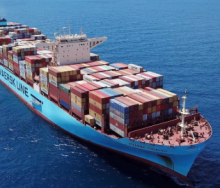Freight volumes seem to have stabilised after initial signs of shrinkage in the market at the end of last year, according to the International Air Transport Association (Iata).
In a statement released yesterday, the organisation said the picture had been clouded in January by the impact of January factory closures due to the earlier Chinese New Year, but once that was allowed for, the stability experienced in the fourth quarter of 2011 has seemingly carried over into early 2012.
According to Iata, a decline in airfreight is often seen as a precursor to weakness in passenger markets and the wider economy, but that does not seem to be the case this time. “Although air freight shrank during the second half of last year, world trade overall continued to expand. The pattern of falling air freight but rising sea freight looks to be due to the current pattern of economic growth, with strong Asian economies buying bulk commodities but weak western consumer spending on high value/ low volume goods,” it said in a statement.
With purchasing managers having signalled that they are less pessimistic than they were in the third quarter, the next few months for air freight are, however, likely to remain flat. However, while Europe remains weak, the confidence of US consumers has risen significantly in recent months. The second half of 2012 is expected to bring a moderate upturn in airfreight volumes as a result.
According to IATA there will also be the rebounds from the impact of Japan’s tsunami and earthquake to give a boost to Asia- Pacific RTKs (cargo + passengers) in 2012, and a similar boost to traffic for African airlines from the rebound in travel following the civil unrest earlier in 2011.
The organisation said one significant change in its latest forecast from December is on the capacity side.
“In December we had expected weaker economic growth to undermine demand faster than airlines would be able to slow capacity growth. Judging from the schedules published for 2012, we underestimated the responsiveness of the industry. In this forecast we expect capacity to grow at a slower pace than demand, producing a supply-demand environment that will limit the damage to profitability from high jet fuel prices in our central forecast. That situation does however change for the worse in the ‘oil price spike’ scenario.”
Airfreight volumes stabilise – Iata
21 Mar 2012 - by Staff reporter
0 Comments
Border Beat
27 Jan 2025
Featured Jobs
New












